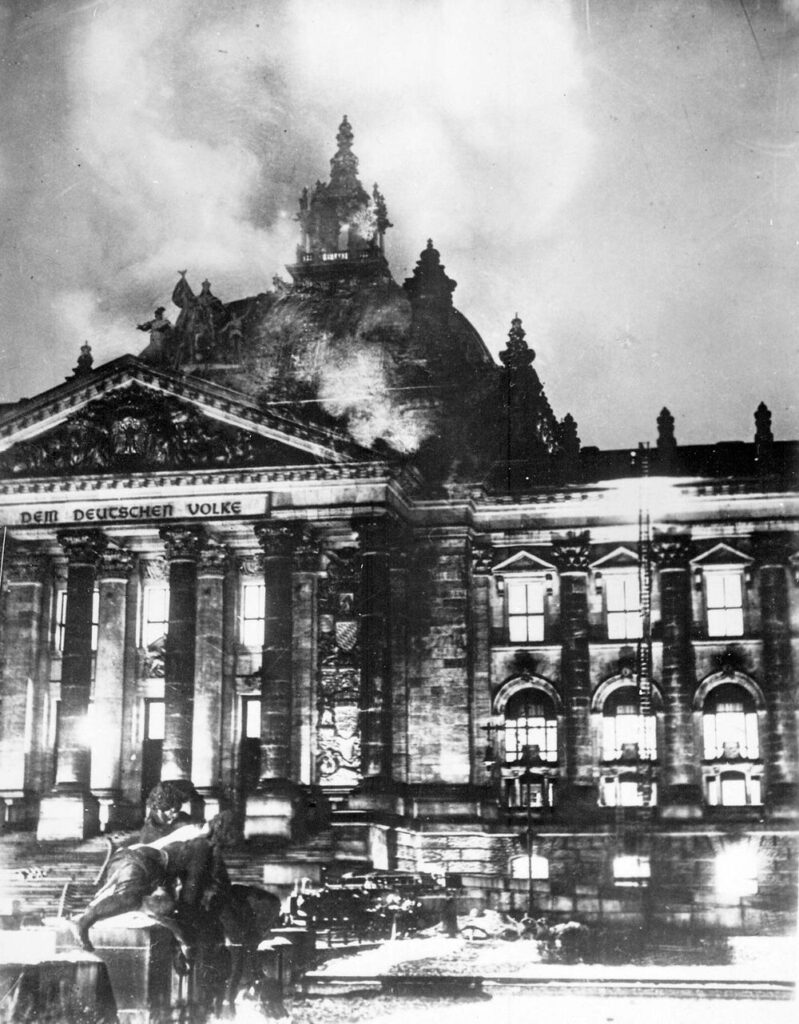4 – From Fire to Führer
Following a series of maneuverings and intrigues, Hitler was appointed chancellor of Germany in January 1933. However, he aspired to even greater power, and that was achieved when Germany’s parliamentary building caught fire and was severely damaged on February 27, 1933. While Hitler’s involvement in the Reichstag fire remains uncertain—a lone communist was later convicted of the crime—he used the event to solidify his authority. The day after the blaze, he oversaw the suspension of all civil liberties, and in the following month’s election, the Nazis and their allies secured a majority in the Reichstag. On March 23, 1933, the Reichstag passed the Enabling Act, which sanctioned Hitler’s dictatorship. Then, in August 1934, shortly after the death of Pres. Paul von Hindenburg, the German people voted to give Hitler complete authority, combining the offices of chancellor and president to create the post of “Führer und Reichskanzler” (“Leader and Chancellor”).




